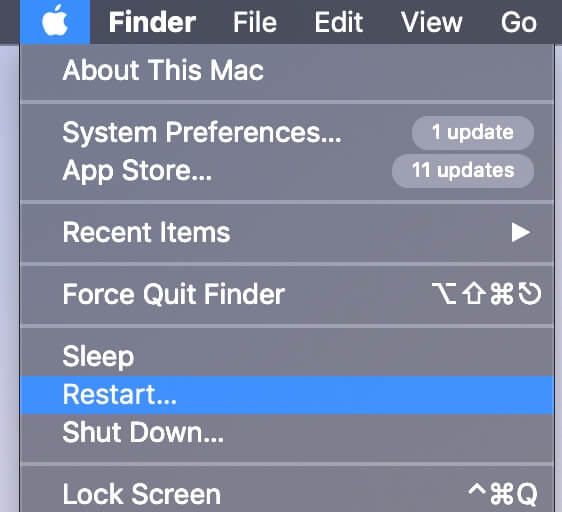OutofMemoryException Mac OS
- Aspose.Words for.NET API can be used to develop applications for a vast range of operating systems, such as Windows, Linux and Mac OS, and platforms. You can build both 32-bit and 64-bit applications, including ASP.NET, WCF, and WinForms. Aspose.Words for.NET can also be used via COM Interop from ASP, PHP, Perl, and Python.
- All locked files should be released by the OS once the owning process is killed. What happens in this issue is that when you encounter an out of memory exception the neo4j instance cannot be shut down cleanly and even if you instruct it to stop, it will still linger. To get out of this you can locate the process id of the neo4j instance with.
Environment: Mac OS 10.4.11, Java 1.5, Smack 3.0.4/3.1.0 Reporter: Orton Huang Fix For: 2.0.0 on publishing messages lots of messages using XMPP component (layered on top of Smack 3.0.4/3.1.0 client), Out of Memory Exception occurs. With standard JVM settings, client runs out of memory at around 6600 messages sent.
Taking the next glorious step down the shining path of our .NET Exception Handling series, today we’ll be looking over the amazing System.OutOfMemoryException. As the name implies, the System.OutOfMemoryException typically occurs when the common language runtime (CLR) is unable to allocate enough memory that would be necessary to perform the current operation.
We’ll spend this article seeing exactly where the System.OutOfMemoryException resides within the .NET exception hierarchy, while also examining a trio of possible causes that could present a System.OutOfMemoryException in your own code. Let the adventure begin!
The Technical Rundown

- All .NET exceptions are derived classes of the
System.Exceptionbase class, or derived from another inherited class therein. System.SystemExceptionis inherited from theSystem.Exceptionclass.System.OutOfMemoryExceptionis inherited from theSystem.SystemExceptionclass.
When Should You Use It?
In spite of the name, the most likely cause of a System.OutOfMemoryException is not technically due to a lack of memory. Instead, a System.OutOfMemoryException can occur when attempting to increase the length of an instance of the StringBuilder class, beyond what is specified by its current MaxCapacity property.
Outofmemoryexception Mac Os Download
To illustrate, here we have some simple code that generates a new StringBuilder instance called builder:

Outofmemoryexception Mac Os X
As indicated by the comments, we’re using a particular override of StringBuilder, in this case the StringBuilder(Int32, Int32) override, which defines the capacity and MaxCapacity property during initialization. In this case, both are set to 3, the length of our firstName string.
We then .Append that initial value to our builder, after which we attempt to .Insert our second value at the end of the existing string index. However, because we’ve already set the MaxCapacity value to 3, and we’ve appended 3 characters, we’ve used up all allocated memory for our StringBuilder instance. Thus, our .Insert attempt throws a System.OutOfMemoryException:
In this case, the issue is that we’ve told the CLR how much memory to allocate using the MaxCapacity property, which was assigned by using the StringBUilder(Int32, Int32) override. The simplest solution is to use a different override, one that doesn’t assign the MaxCapacity property. This will cause the default value to be set, which is Int32.MaxValue (i.e. roughly 2.15 billion).
Another potential cause of a System.OutOfMemoryException is, of course, actually running out of memory during execution. This could be due to repeatedly concatenating large strings, executing as a 32-bit process (which can only allocate a maximum of 2GB of memory), or attempting to retain massive data sets in memory during execution. We’ll use the latter issue in our example snippet below:
This code serves no real functional purpose, but instead just illustrates one possible way of manipulating a huge data set within memory, without using any form of chunking to reduce the allocated memory footprint of the application. In this case, we’re just looping some 200 million times and adding a random number to our list of Doubles every time. Every 10 million loops we also output our current total.
The result is that, eventually, the system cannot handle the amount of memory being used, so a System.OutOfMemoryException is thrown:
The final snippet we’ll look at today is taken from the official documentation. However, this code isn’t producing a System.OutOfMemoryException due to a memory issue, as with our other examples. Instead, this snippet illustrates how System.OutOfMemoryExceptions should be properly handled:
Since a System.OutOfMemoryException indicates a catastrophic error within the system, it’s recommended that anywhere a potential System.OutOfMemoryException could occur be passed to the Environment.FailFast method, which terminates the process and writes a message to the Windows Log. Sure enough, executing the snippet above generates a log entry in the Windows Log, which we can see using the Event Viewer application:
To get the most out of your own applications and to fully manage any and all .NET Exceptions, check out the Airbrake .NET Bug Handler, offering real-time alerts and instantaneous insight into what went wrong with your .NET code, along with built-in support for a variety of popular development integrations including: JIRA, GitHub, Bitbucket, and much more.
If you install duplicati on OMV for arm (raspbian), you can receive Out or memory errors.
You can test the Duplicati error doing a backup or running the mozroot.exe to import a key.